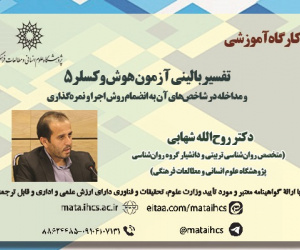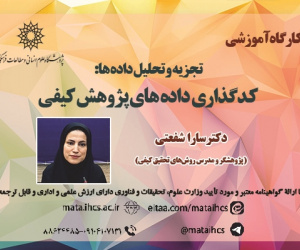مستندات فرارشته ای بودن مطالعات تفسیری
آرشیو
چکیده
پژوهش های میان رشته ای در جهان نوین و به ویژه در دهه های اخیر و در پی ظهور مسائل پیچیده و چند تباری اجتماعی- زیستی در جوامع شهروندی، مورد توجه دانش پژوهان دانشگاهی و مدیران ساختار های اجتماعی قرار گرفته است. نوپدید بودن و گسترش پژوهش های میان رشته ای و میزان و عمق امتزاج و تلفیق این علوم، موجب مطرح شدن گونه ها و رویکرد های متفاوتی از آن شده که کلان طیف های آن عبارتند از: چند رشته ای، بینا رشته ای و فرا رشته ای. میان رشته ای بین منابع اسلامی و به ویژه تفسیر قرآن با سایر علوم بشری، از این قاعده مستثنی نیست. پرسش اصلی مقاله حاضر که با روش مساله محور، توصیفی، تحلیلی و نظری کنکاش می شود، آن است که مستندات فرارشته ای بودن مطالعات تفسیری قرآن چیست؟ دستاورد این پژوهش، دستیابی به مستندات چهارگانه در احتساب مطالعات تفسیری قرآن به عنوان تحقیقی فرارشته ای به شرح ذیل است: اول، وجود شاخصه های چهارگانه پژوهش های فرارشته ای در مطالعات قرآنی؛ دوم، نقش مولفه های چهارگانه متن پژوهی (= نویسنده، متن، خواننده و واقعیت پنهان و تاریخی متن) در مطالعات تفسیری است که مقتضی فرا رشته ای می باشد؛ سوم، کاربست رویکرد های پنج گانه معناشناختی تحلیل واژه ها، تاریخی واژگان، گفتمان حاکم بر متن و معناشناسی شناختی زبان و ذهن که مقتضی عبور از مرز های تخصصی علوم می باشد؛ چهارم، ارتباط بنیادین مفاهیم قرآنی با کلان رشته های سه گانه (= علوم انسانی غیر تجربی و تجربی و علوم تجربی طبیعی) و گستره وسیعی از ذیل رشته های علمی.Evidences of Transdisciplinarity in Exegetical Studies
Interdisciplinary research in the modern world, particularly in recent decades, has gained significant attention from academic scholars and social administrators due to the emergence of complex socio-biological challenges in civil societies. The novelty and expansion of interdisciplinary studies, alongside the depth and integration of these disciplines, have led to diverse frameworks – broadly categorized as multidisciplinary, interdisciplinary, and transdisciplinary approaches. This trend extends to Islamic studies, particularly Quranic exegesis (tafsir), which is not exempt from such interdisciplinary engagement.
The central question explored in this article, through a problem-oriented, descriptive, analytical, and theoretical methodology is: What are the transdisciplinary foundations of Quranic interpretive studies? The study identifies four key pillars supporting the classification of Quranic exegesis as transdisciplinary research: 1) Presence of Four Transdisciplinary Characteristics in Quranic Studies: Quranic research exhibits the four defining traits of transdisciplinary inquiry, including integration across disciplines, holistic analysis, addressing real-world complexities, and transcending methodological boundaries. 2) Role of the Four Textual Components in Interpretation: The interplay of four textual elements – author, text, reader, and the hidden historical reality of the text – in exegetical analysis necessitates a transdisciplinary framework to harmonize theological, historical, linguistic, and sociocultural dimensions. 3) Application of Five Semiotic Approaches: Quranic interpretation employs five semiotic methods – semantic analysis of words, etymology, dominant discourse in the text, cognitive semantics of language, and cognitive semantics of mind – which require transcending disciplinary silos to decode layered meanings. 4) Fundamental Connection Between Quranic Concepts and Three Major Scientific Domains: Quranic themes are intrinsically linked to three broad scientific fields – non-empirical humanities, empirical humanities, and natural sciences – alongside a vast array of sub-disciplines, fostering interdisciplinary dialogue.







